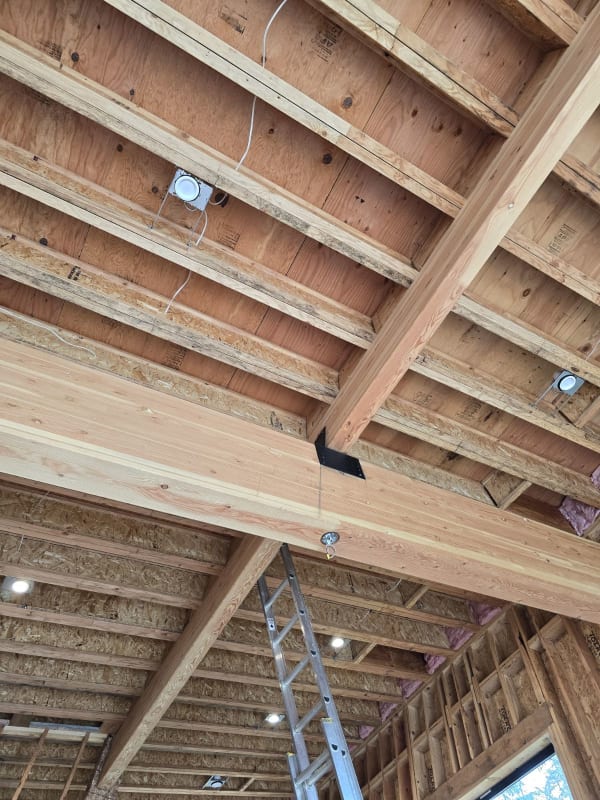galvitarito
Structural
- Mar 18, 2021
- 4
Hi folks -
Had a contractor contact me today looking for me to buy off on him drilling a hole through the bottom of a glulam beam to hang a fan & light fixture from. The beam in question is an 8.75x24 glulam spanning 19ft and supporting an almost 35kip point load from the smaller intersecting glulams above (very high snow load project location).
The contractor says the hole is only 1/2" diameter but I'm skeptical based on what I can see in the photo. I have concerns on this affecting the strength of the beam by reducing cross-section through the tension plies at the most critical point in the beam's span.
What are other's opinions? Are there repair solutions available?
Thank you
Had a contractor contact me today looking for me to buy off on him drilling a hole through the bottom of a glulam beam to hang a fan & light fixture from. The beam in question is an 8.75x24 glulam spanning 19ft and supporting an almost 35kip point load from the smaller intersecting glulams above (very high snow load project location).
The contractor says the hole is only 1/2" diameter but I'm skeptical based on what I can see in the photo. I have concerns on this affecting the strength of the beam by reducing cross-section through the tension plies at the most critical point in the beam's span.
What are other's opinions? Are there repair solutions available?
Thank you

